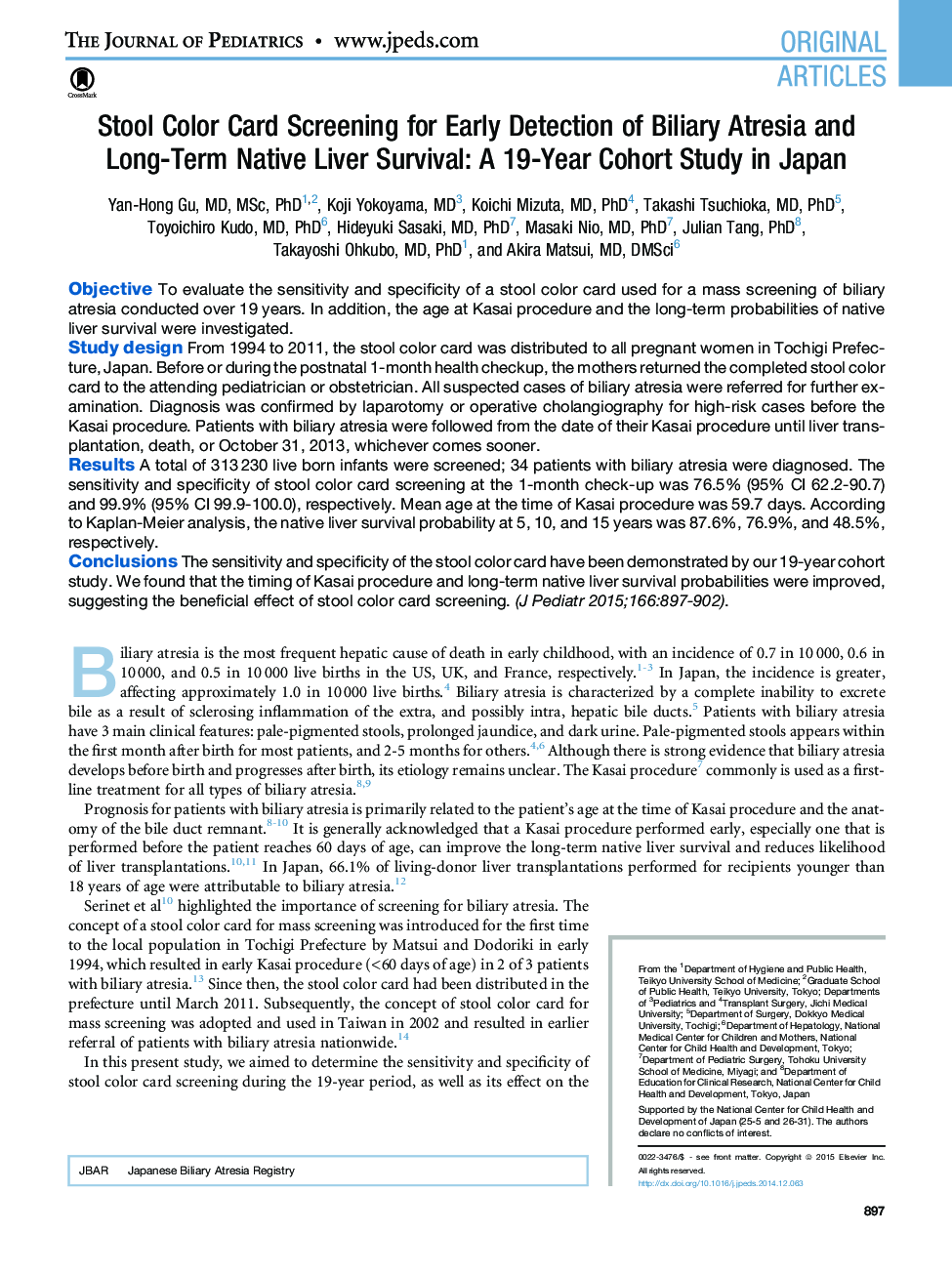| Article ID | Journal | Published Year | Pages | File Type |
|---|---|---|---|---|
| 6221494 | The Journal of Pediatrics | 2015 | 7 Pages |
ObjectiveTo evaluate the sensitivity and specificity of a stool color card used for a mass screening of biliary atresia conducted over 19Â years. In addition, the age at Kasai procedure and the long-term probabilities of native liver survival were investigated.Study designFrom 1994 to 2011, the stool color card was distributed to all pregnant women in Tochigi Prefecture, Japan. Before or during the postnatal 1-month health checkup, the mothers returned the completed stool color card to the attending pediatrician or obstetrician. All suspected cases of biliary atresia were referred for further examination. Diagnosis was confirmed by laparotomy or operative cholangiography for high-risk cases before the Kasai procedure. Patients with biliary atresia were followed from the date of their Kasai procedure until liver transplantation, death, or October 31, 2013, whichever comes sooner.ResultsA total of 313â230 live born infants were screened; 34 patients with biliary atresia were diagnosed. The sensitivity and specificity of stool color card screening at the 1-month check-up was 76.5% (95% CI 62.2-90.7) and 99.9% (95% CI 99.9-100.0), respectively. Mean age at the time of Kasai procedure was 59.7Â days. According to Kaplan-Meier analysis, the native liver survival probability at 5, 10, and 15Â years was 87.6%, 76.9%, and 48.5%, respectively.ConclusionsThe sensitivity and specificity of the stool color card have been demonstrated by our 19-year cohort study. We found that the timing of Kasai procedure and long-term native liver survival probabilities were improved, suggesting the beneficial effect of stool color card screening.
